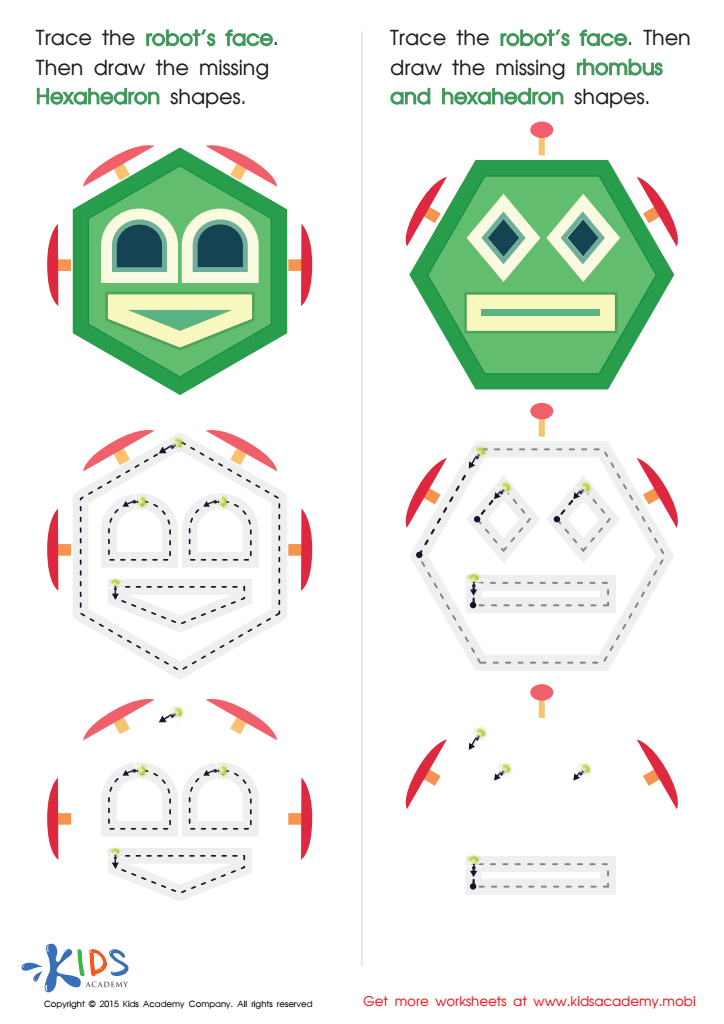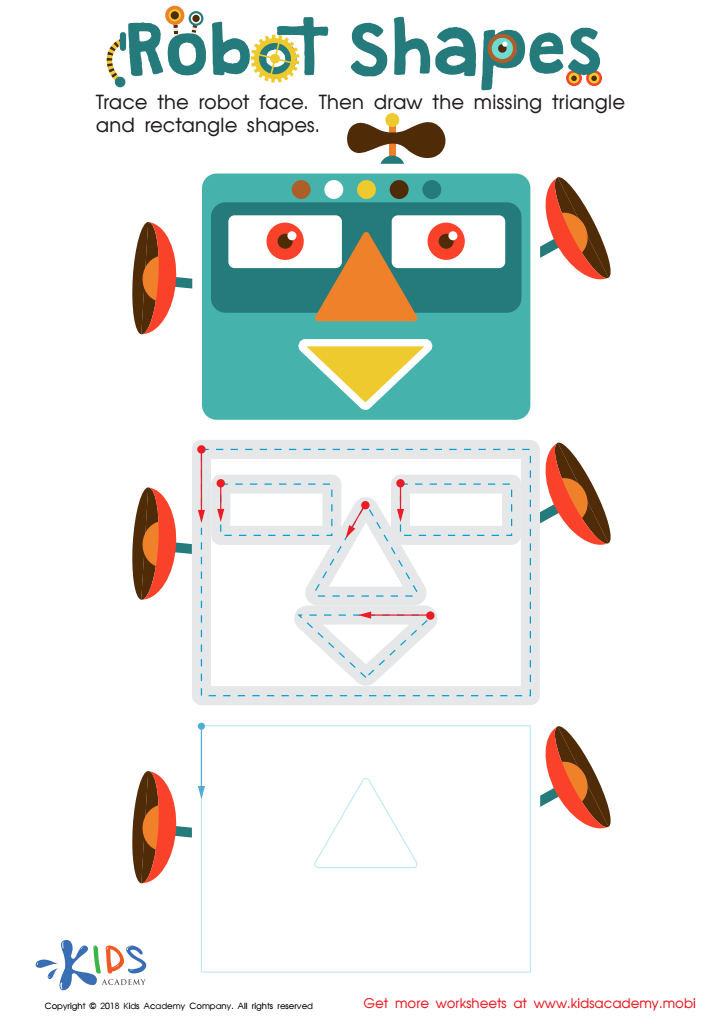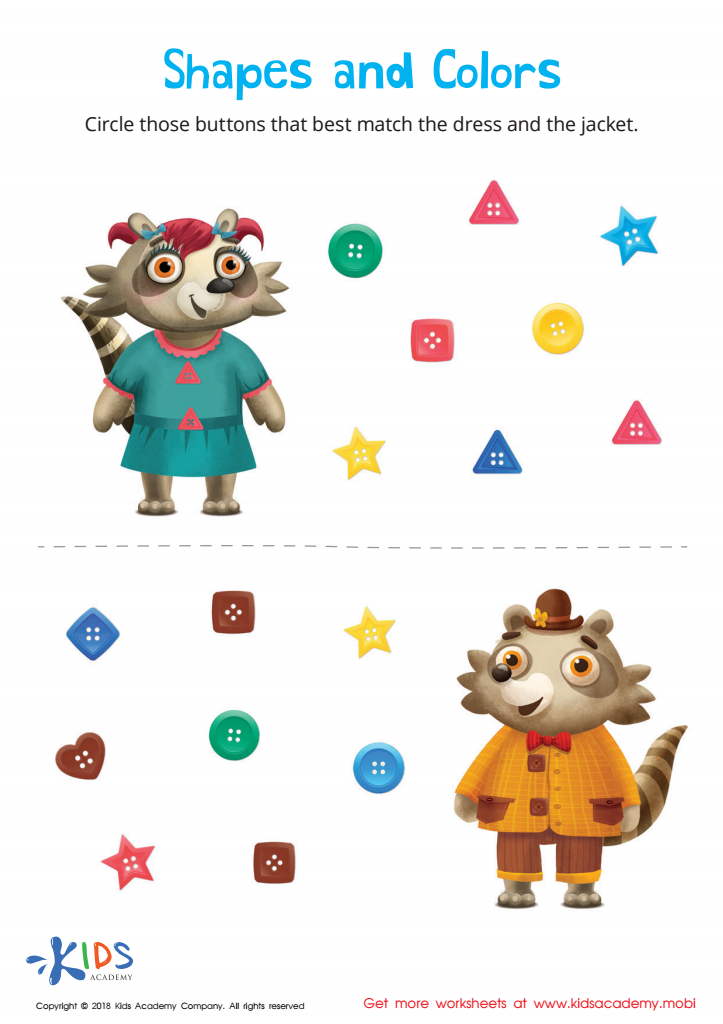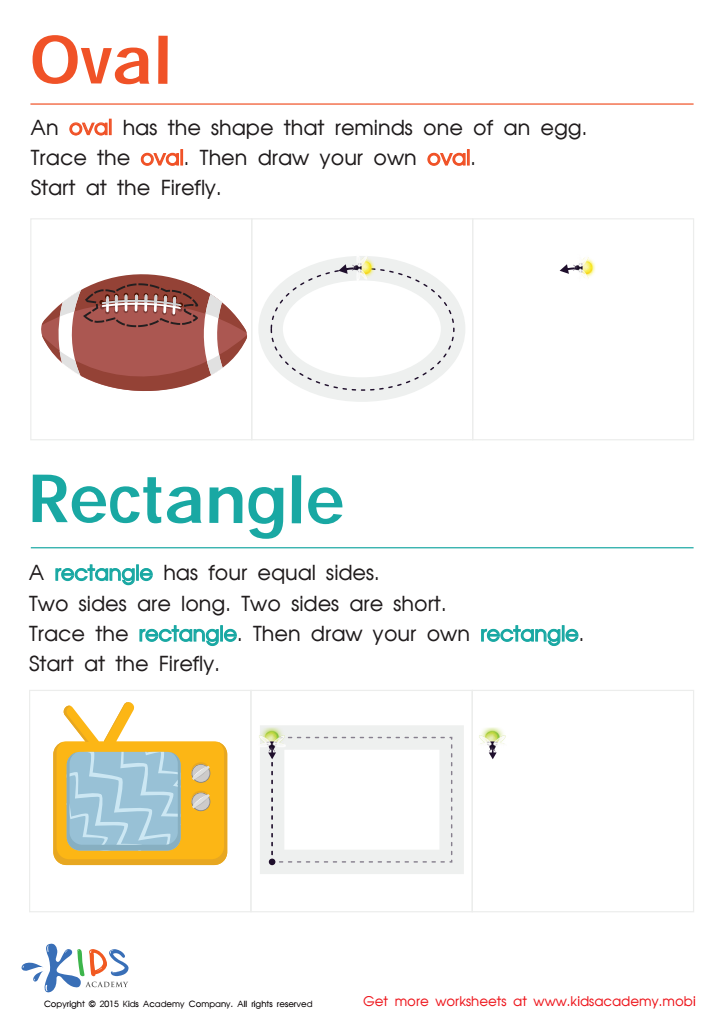Fine Motor Skills Normal Geometry Worksheets for 3-Year-Olds
6 filtered results
-
From - To
Encourage your 3-year-old's fine motor development with our engaging Normal Geometry Worksheets! Specially designed for early learners, these activities focus on building essential skills through interactive geometry exercises. Kids will enjoy drawing shapes, tracing patterns, and counting objects while subtly improving their hand-eye coordination and dexterity. Perfect for little hands, our worksheets make learning math fun and accessible. Delight in watching your child explore the world of geometry through age-appropriate, educational activities that promote fine motor skills. Visit our site to download and start nurturing your child's budding mathematical abilities today!


Practice Drawing Hexahedrons And a Rhombus Worksheet


Preschool Geometry Match Up Worksheet


Learning to Draw Crescents And Triangles Worksheet


Robot Shapes Worksheet


Shapes and Colors Worksheet


Easy Drawing of Ovals And Rectangles Worksheet
Parents and teachers should give due attention to fine motor skills and normal geometry for 3-year-olds because these foundational skills are crucial for children’s overall cognitive and physical development. Fine motor skills involve the coordination of small muscles, particularly in the hands, fingers, and eyes, that allows for activities like drawing, cutting with scissors, and manipulating small objects. These skills are essential for later academic achievements, including writing and manipulating tools effectively. Encouraging fine motor development can lead to better hand-eye coordination, improved dexterity, and enhanced independence in daily activities like buttoning clothes and feeding oneself.
In addition, understanding basic geometric concepts helps lay the groundwork for later mathematical reasoning. When young children engage with activities involving shapes and spatial relations—distinguishing between circles, squares, and triangles, for instance—they build visual and spatial skills that are critical for problem-solving and understanding the world around them. Activities such as sorting shapes, building with blocks, or completing simple puzzles can simultaneously boost both fine motor skills and geometric understanding.
Together, enhanced fine motor skills and early geometric competency support not just academic success but also overall development, including cognitive, social, and physical realms. Hence, parents and teachers should incorporate intentional activities involving both to foster well-rounded growth in preschool children.
 Assign to My Students
Assign to My Students






























